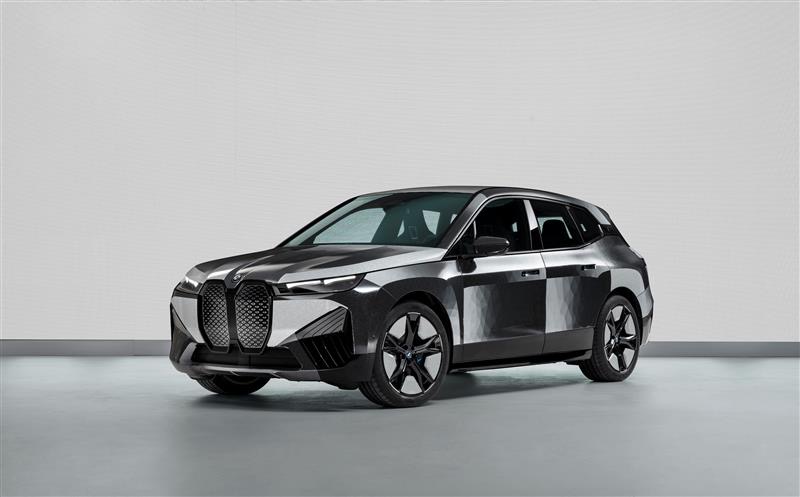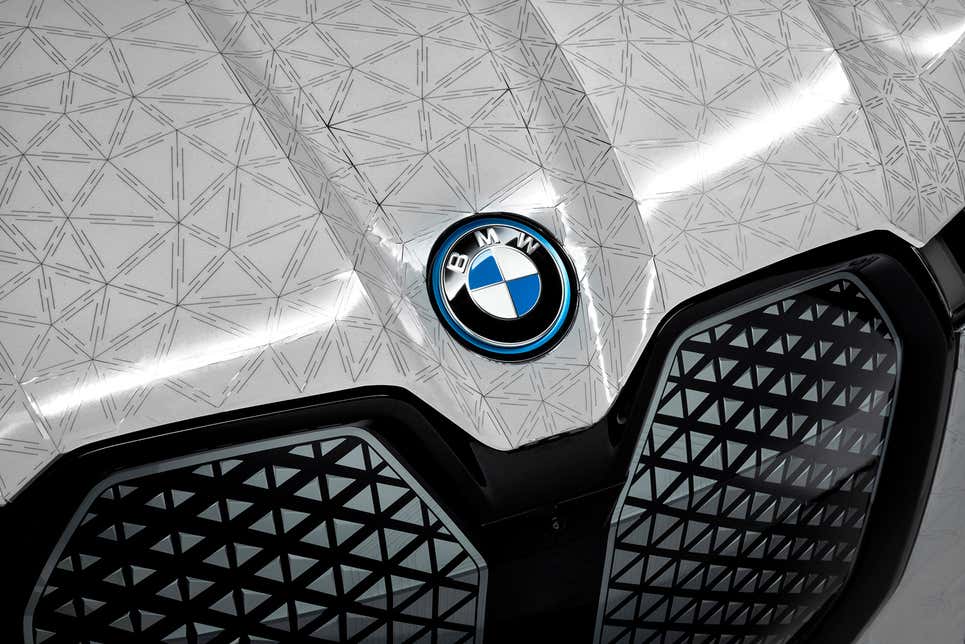
That Shade-Shifting Beemer At CES Is Coated In E Ink Film
January 6, 2022 by Dave Haynes
If you pay attention to news and images from CES this week, you have likely seen photos and short videos of a BMW concept car being shown in Las Vegas that can change from black to white on the fly.
It’s kind of wild to see, and I assumed it was some sort of technology that introduces electricity to some sort of ink and causes the change. That is indeed the case, but not the way I thought. It’s a film developed by E Ink, the Taiwanese-American firm that does e-paper displays and readers.
The BMW iX Flow uses E Ink Prism, a film developed for the architecture and design markets. E Ink Prism, says the company, “is fully programmable, giving BMW the creative freedom to customize the patterns and materials. To accomplish this, E Ink engineers worked closely with BMW engineers to create optimal functionality and perfect color switching of their complex laser cut designs which align with the curves of the car.”
“E Ink’s color changing technology is technically amazing. Seeing it formed on our highly curved surfaces is absolutely unexpected and seemingly magical,” says Stella Clarke, Head of Project for the BMW iX Flow Featuring E Ink.
In addition to personalization, a variable exterior also contributes to the efficiency of the vehicle. By nature, a white exterior on hot days would reflect sunlight and conversely, a black exterior on cold days would absorb the sunlight. This could reduce the amount of energy the vehicle uses for heating and cooling the interior.
The process of changing the color of the car is extremely efficient because of E Ink’s ultra-low power technology. E Ink’s digital paper is bistable – meaning it only uses power to change color, not to maintain it. This inherent trait makes it possible to change the color of the car with minimal power, and aligns with the sustainability mission of the all-electric vehicle.
“This concept car with BMW is an amazing display of how surfaces of the future will transform to personalize, customize and provide information,” said Tim O’Malley, AVP, US Regional Business Unit. “Because E Ink is incredibly low power and durable, we can put our display technology on almost any surface, transforming a once static space into something dynamic and spectacular – and sustainable.”
The visuals I have seen are pretty eye-grabbing, and offer at least a hint of where this could go, somewhere well down the line. You could imagine doors and other surfaces of cars having dynamic messaging. Some people will think ads. I think more about operational messaging (information on delivery vehicles) and things like occupancy and availability for mass transport and taxis/ride shares.
The programmable Prism film has been around since 2015 or so, used as an interior design surface and even doing things like making the wall of a parking garage active. The primary application of e-paper to date (apart from millions of e-readers like Kindles and Kobos) has been for things like electronic shelf tags and labels, and for meeting room signs and transit schedule update displays at curbsides.

The film on the car surface is a series of triangles that brighten or darken. The film is sensitive to temperature changes, so there aren’t that many locales where this sort of thing – costs and other issues aside – would be feasible.
But definitely interesting!
This color changing @BMWUSA #iX is wild! It’s apparently very temperature sensitive so they have a backup in a trailer in case this one gets too hot / cold pic.twitter.com/lXG1Gw0IKY
— Out of Spec Studios (@Out_of_Spec) January 4, 2022



Leave a comment